CLICK HERE FOR THIS STORY ON UNPOST.ORG
“A manager’s task is to make the strengths of people effective and their weakness irrelevant–and that applies fully as much to the manager’s boss as it applies to the manager’s subordinates.” Peter Drucker.
“Good management consists in showing average people how to do the work of superior people.” John Rockefeller.
In a classic definition, what does Non-Performing Asset (NPA) mean?
A classification used by financial institutions that refer to loans that are in jeopardy of default. Once the borrower has failed to make interest or principal payments for 90 days, the loan is considered to be a non-performing asset.
In the area of organizational Human Resource Management, NPA has been loosely referred to as those staff or employees, despite sincere efforts taken to help them improve work performance, it is not working and they are increasingly proving to be Non-Performing Assets negatively impacting the organizational environment. It may be time to fire such employee(s), but the organization must follow well-defined legal and ethical steps in terminating their services.
In this write-up I am not going to be concerned with insentient assets of the UN, but specifically refer to the huge numbers of the human assets spread around the world. Since these human assets are the ones that can make or break in fulfilling the mandates of the UN and its agencies, the writer did an honest, quick, but a serious analysis of the many disputes and appeals that have been vetted through the UN Internal Justice system particularly after the reformed system that came into being on 1 July 2009.
There have been more complaints and cases of termination and non-renewal of appointments with links to defective or dishonest performance appraisals; using or abusing the biennium budget process and other funding mechanisms in order to abolish and create so called new, but essentially similar posts to get rid of existing staff. There seems a dearth of appreciation and acknowledgement of long years of loyal service even where the performance level reckoned as superior or more than satisfactory.
Another mechanism used by the HR management is that of “upgrading” posts for alleged reasons of significant changes in the complexity, responsibility, volume of work, etc. Though the post in question may have grown into greater significance over period of time for various reasons and the incumbent too has grown and proven his/her performance, the incumbent has still to apply for the upgraded post, go through the recruitment process, and may have to compete with the external candidates as well.
Never mind the years of UN service with above average performance, anyone in the abolished post should apply for new post, whether it is really a new post or whether the new post is just a newly dressed up avatar of the existing post. It might appear that the loyalty is rather one-sided, and it does not apply to the organization. In other words, the standards of conduct of international civil service belong to the employees, and not to the organization!
When the writer was working in a duty station where the UN has one of its large regional set up, it was quite normal for some, even when not connected to the UN, to talk without any inhibition about the so called “mid-night” promotions. To what extent our day-light Internal Justice system could take cognizance of such nefarious practices and punish if they are true, is just anybody’s guess.
UN HR has been advocating career and staff development since many decades, with a kind of unique explanation of its objective: organization assumes the responsibility for staff development, whereas the career development is the sole concern of the staff!
One may wonder whether the staff development and career development are indeed two separate entities or should these be closely linked complementing each other for the benefit of the organizational success and individual staff’s job-satisfaction and normal career-ambition.
In these circumstances, those affected staff seeking redress and justice from the justice system faces another greater challenge: that is, the Internal Justice as reformed and re-designed can only be guided by the written statutes, rules, procedures, etc. and cannot investigate into the real motives behind many such HR actions, nor can it hold the managers accountable.
As we will soon be celebrating the first anniversary of the reformed UN Internal Justice System, it would be timely to review its workings and the changes that happened during these months as opposed to any real expectation, learn lessons and report back to the UN General Assembly to see through its prism of collective wisdom.
See what the Redesign Panel said about the reformed justice system (quoted from UN Press Release ORG/1470 of 20 July 2006):
“The Panel has, thus, essentially recommended a fundamentally “redesigned” system of internal justice in the United Nations that is independent, effective, efficient and professional, one that complies with basic human rights standards, to which staff members are entitled, and ensures accountability of managers and staff.“
“The new system, if adequately resourced, will offer redress to staff grievances and deal with staff or managerial misconduct far more quickly and effectively than the system currently in place. It will, thus, be significantly more cost-effective than the present system, which is costly, in terms of time, staff dissatisfaction and the reputation of the Organization.“
If this is what the UN and its stakeholders wanted to do to genuinely address the problems, then the organization should have gone beyond just establishing the OAJ/UNDT/UNAT/OSLA/Management Evaluation et al. It should have put in place a kind of adapted Six Sigma project to totally overall the whole gamut of things that have been going on and on for decades in the name of HR management and political correctness.
While the redesign panel gave a philosophical overview of the state of affairs and what is required to be done, it was left up to the management to select the tools and methodologies to achieve the results. It is difficult to guess from outside or to know precisely, if anything, what the important preliminary steps were undertaken and how effective they have been carried out. But it remains clear that much of the real “human mindset change” is still to take place and it may not happen at all unless we are prepared to carry out some kind of “inner engineering” and inner surgical cleansing.
For example, we need to know to what extent the organization had done some or all the following analysis:
- Define the problem, the voice of the client (staff), and the project goals, specifically how fast and efficiently the staff issues can be resolved.
- Measure key aspects of the current process and collect relevant data, i.e. why, how and how often organization restructuring takes place; budgetary process; how objective and transparent the performance appraisal process is working; how the responsibility and accountability of line supervisors and managers are understood and enforced; how honestly the performance appraisal and feedback system work; are the present staff regulations and rules relevant in the present day globalized world and how these compare with the other progressive democratic civil service systems and public undertakings;
- How congruent are these regulations and rules, and most importantly the practices on the ground, with those rights and obligations described in the UN Charter and Universal Declaration of Human Rights;
- Analyze the data to investigate and verify cause-effect relationships. Determine what the relationships are there and complexities, and attempt to ensure that all factors have been considered. Seek out root cause of the defect under investigation.
- Improve or optimize the process based upon data analysis using proven HR management techniques that are truly in harmony with the human rights and human dignity; though HR are not machines, there are techniques of risk management strategies and capabilities that are fair, ethical and just;
- Never hesitate to discard those principles and practices that are out of date and proven harmful to people and organization;
- Determine if any pilot projects can be tried in a chosen section or division and study actual working of the techniques and capability of scaling up, adoption and mainstreaming the successful processes.
- Simultaneously nurture the birth and growth of mentors, team players and humane leaders to motivate staff and “deliver as one UN”; practice openness in acknowledging, recognizing and rewarding meritocracy and reforming the back-benchers as far as possible before giving up;
- Verify the design and set up pilot runs that worked so to implement the process and hand it over to the process owner(s) and managers, making them accountable.
- Continually Monitor and evaluate the adopted HR systems and processes in regard to suitability, viability, sustainability and honesty, in an on-going manner to ensure timely midcourse corrections, changes, etc. to be in place.
- Maintain a statistical analysis and records of the implementation process to learn lessons and to ensure the whole reform process are implemented with continuing improvement as necessary.
- Control the future reform process to ensure that any deviations from target are corrected before they result in defects and avoidable damages.
These are not new discoveries but are part of the “inner engineering” process of human development, both individually and collectively. Many organizations, be it in manufacturing, service, IT or not-for-profit work in the emerging countries have been observed to be using similar HR practices to remain at the top.
It is time the UN learns from the best practices from around the world in the areas of human relationships management and build a better and stronger organization on the solid foundation of values and truth. It is not possible to expect any justice system, internal or external to do deep surgical corrections when these are primarily the responsibilities of the managers and the well-heeled politicized administrative machinery.
V. Muthuswami, Chennai, India
Joint Appellant of the Common Cause Appeal # UNAT 2009-001.
Still waiting for the justice to be done.



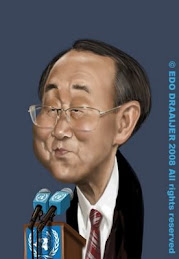

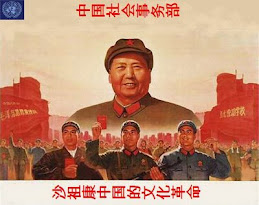






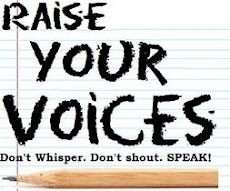



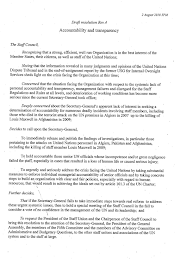

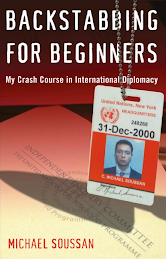
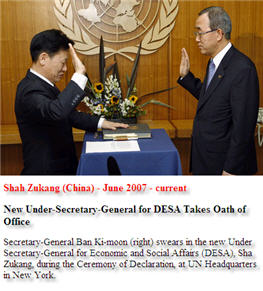
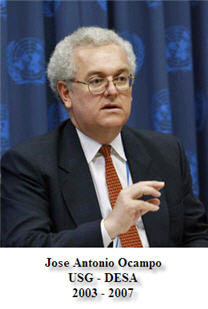
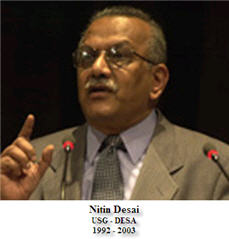
No comments:
Post a Comment